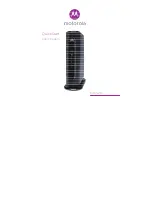
Company Confidential
4
Raveon Technologies Corp.
1. General Information about the RV-M8
1.1. Congratulations!
Congratulations on your purchase of an
M8S
OEM radio modem
– the most
advanced radio modem of its kind available today.
Please take a few minutes to read this manual carefully. The information
presented here will allow you to derive maximum performance from your radio
modem. After reading it, keep the manual handy for quick reference, in case
questions arise later on.
1.2. NOTICE
There are no user-serviceable points inside this transceiver. All service work
must be referred to your Authorized Service Center or Raveon Technologies
Service Department.
1.3. Safety / Warning Information
WARNING
- DO NOT operate the RV-M8S radio modem when bystanders
are near the antenna.
Blasting Caps and Blasting Areas
To avoid possible interference with blasting operations, turn off this radio or
remove the DC power when you are near electrical blasting caps, in a
blasting area, or in areas posted: “
Turn off two-way radio
.” Obey all signs
and instructions.
Potentially Explosive Atmospheres
Turn off your radio prior to entering any area with a potentially explosive
atmosphere. Do not install this product for use in areas with potentially
explosive atmospheres. Do not remove, install, or charge batteries in such
areas. Sparks
in a potentially explosive atmosphere can cause an explosion
or fire resulting in bodily injury or even death.
Note:
The areas with potentially explosive atmospheres referred to above include fueling
areas such as below decks on boats, fuel or chemical transfer or storage facilities, areas
where the air contains chemicals or particles, such as grain, dust or metal powders, and any
other area where you would normally be advised to turn off your vehicle engine. Areas with
potentially explosive atmospheres are often but not always posted.
1.4. FCC /IC (or Regulatory Agency?) Compliance Information
a. FCC Compliance Notice
This device complies with part 15 of the FCC Rules. Operation is subject
to the following two conditions: (1) This device may not cause harmful
interference, and (2) this device must accept any interference received,
including interference that may cause undesired operation.





































